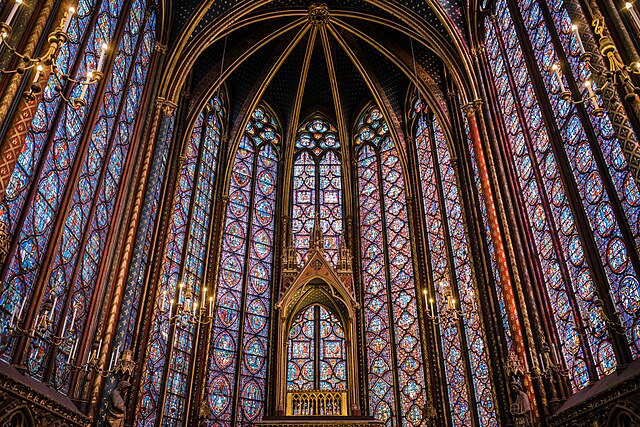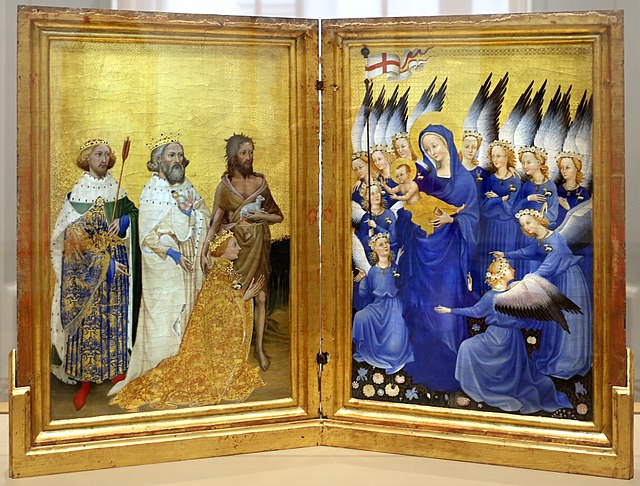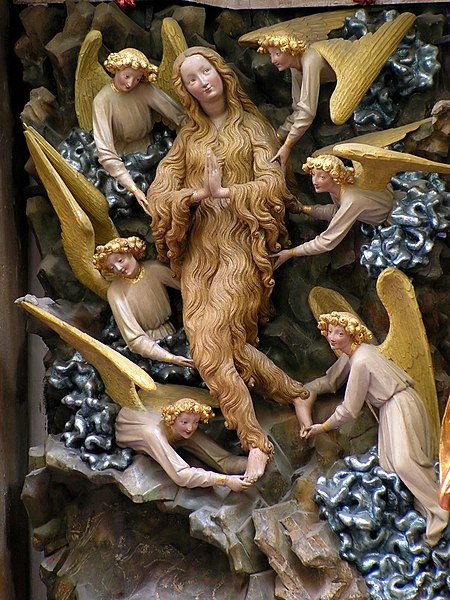International Gothic is a period of Gothic art which began in Burgundy, France, and northern Italy in the late 14th and early 15th century. It then spread very widely across Western Europe, hence the name for the period, which was introduced by the French art historian Louis Courajod at the end of the 19th century.
The Agony in the Garden with the Donor Louis I, Duke of Orléans, Colart de Laon, c. 1405-1408, Prado Museum
Detail of the Annunciation (1333) by the Sienese Simone Martini, Uffizi
Lorenzo Monaco, The Flight into Egypt (c. 1405, predella) Tempera on poplar, 21,2 x 35,5 cm
The Votive Panel of Jan Očko of Vlašim. Kneeling Emperor Charles IV and his son Wenceslaus before the Virgin, Bohemia, 1371. (detail)
Gothic art was a style of medieval art that developed in Northern France out of Romanesque art in the 12th century AD, led by the concurrent development of Gothic architecture. It spread to all of Western Europe, and much of Northern, Southern and Central Europe, never quite effacing more classical styles in Italy. In the late 14th century, the sophisticated court style of International Gothic developed, which continued to evolve until the late 15th century. In many areas, especially Germany, Late Gothic art continued well into the 16th century, before being subsumed into Renaissance art. Primary media in the Gothic period included sculpture, panel painting, stained glass, fresco and illuminated manuscripts. The easily recognizable shifts in architecture from Romanesque to Gothic, and Gothic to Renaissance styles, are typically used to define the periods in art in all media, although in many ways figurative art developed at a different pace.
Image: Cenral tympanum Chartres
Image: Sainte Chapelle Interior Stained Glass
Image: Anonimo inglese o francese, dittico wilton, 1395 99 ca. 01
14th Century International Gothic Mary Magdalene in St. John Cathedral in Toruń.








